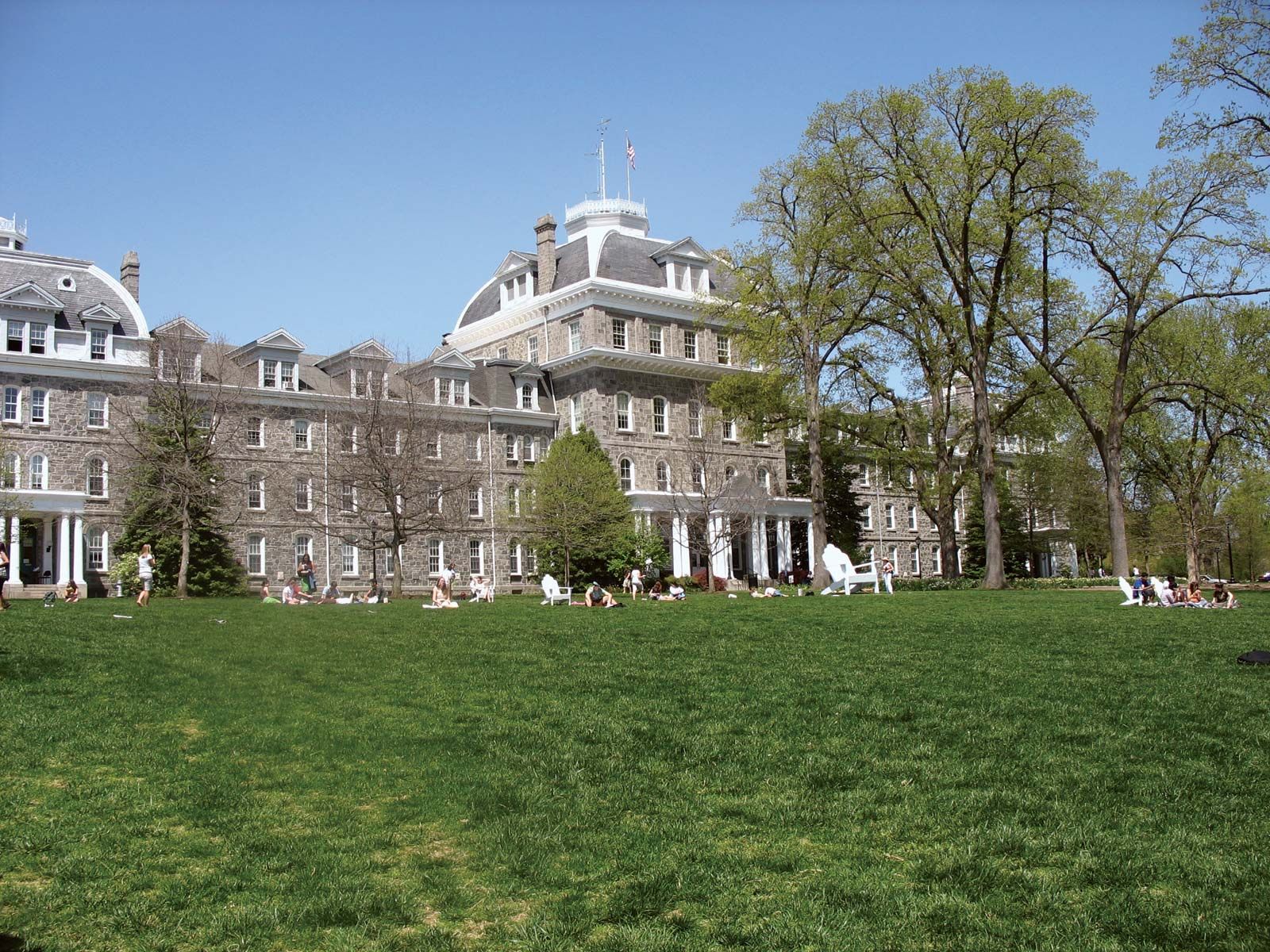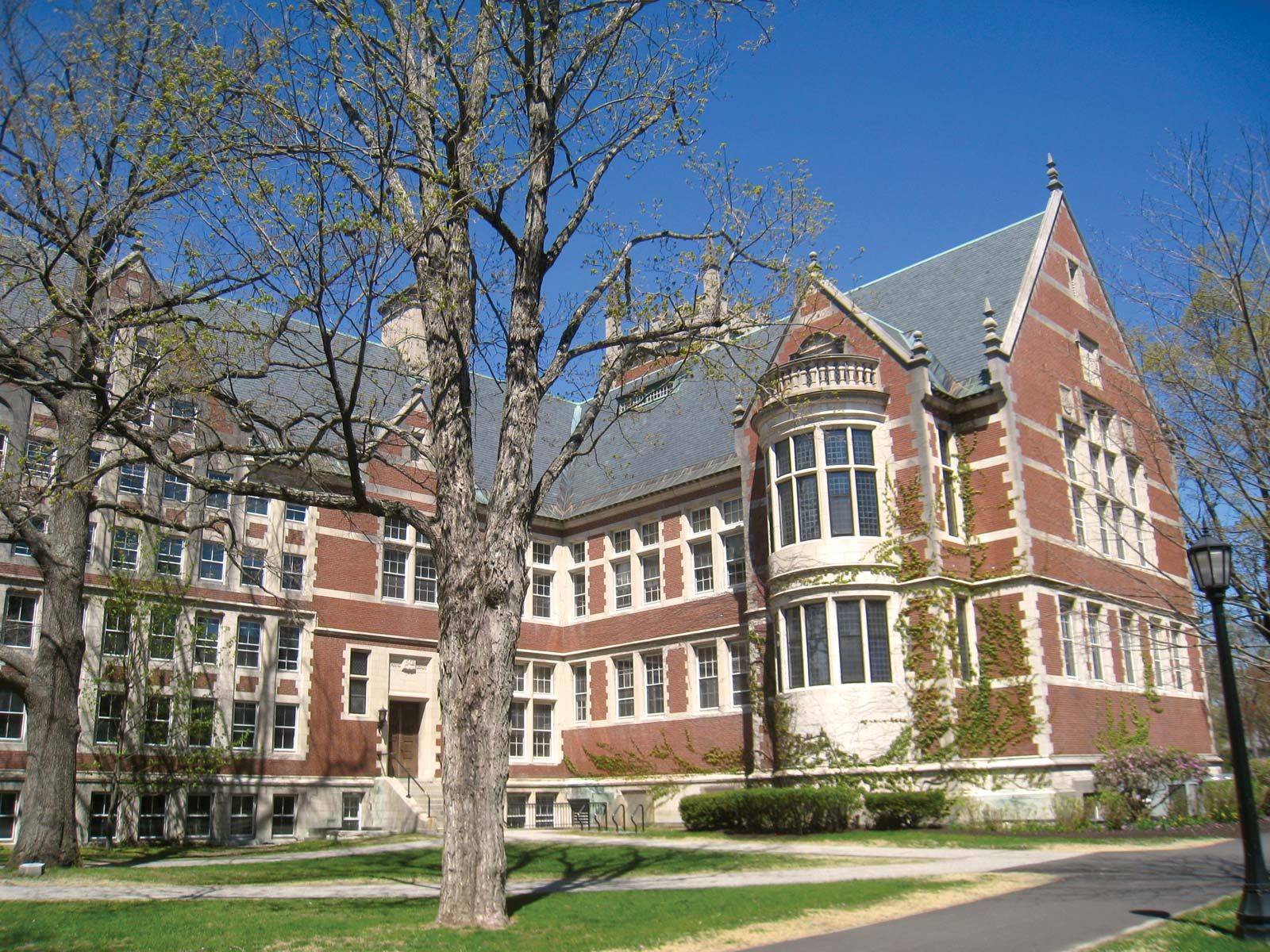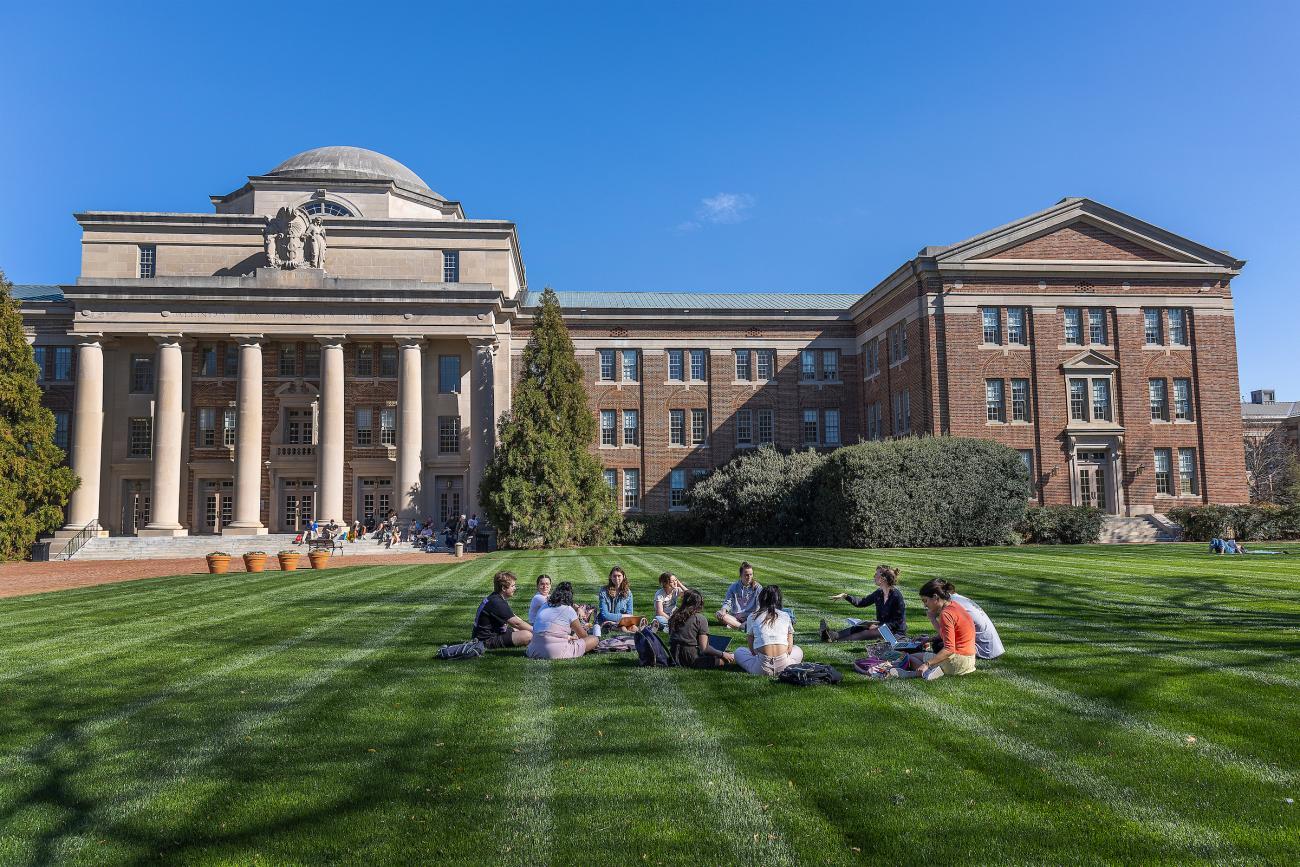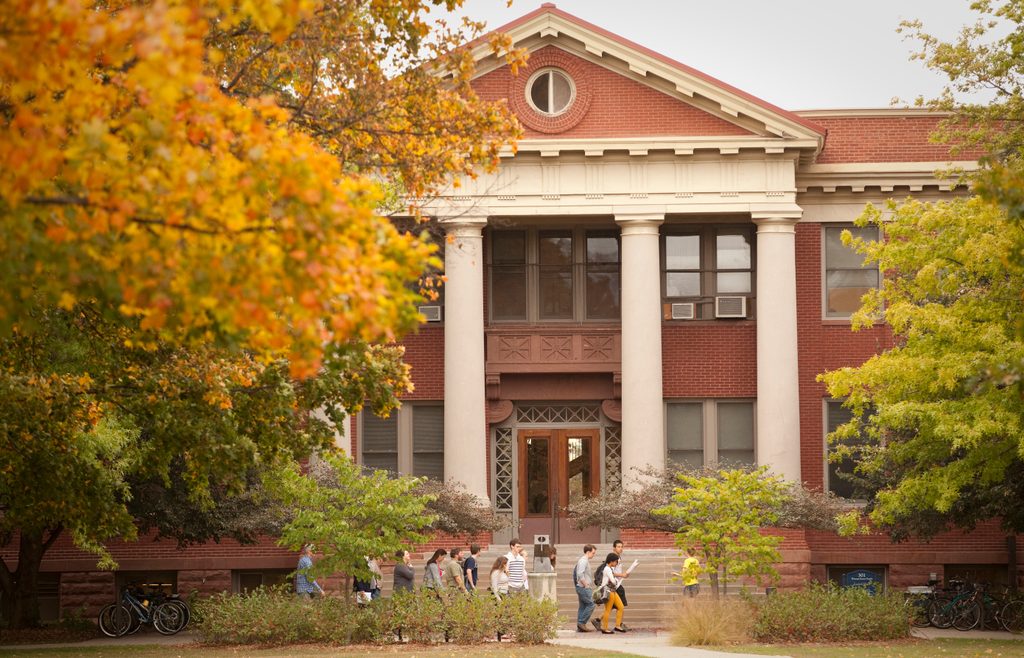Are you tired of the same old college options and looking for something different? Look no further than the 15 best small liberal arts colleges in 2023!
These schools offer a unique educational experience with small class sizes, personalized attention from faculty, and a focus on a well-rounded education. But don’t let their size fool you – these small colleges pack a big punch regarding academics, extracurricular activities, and post-graduation success.
So if you’re ready for a college experience that’s both challenging and rewarding, check out the 15 best small liberal arts colleges in 2023 and apply now for your chance to be a part of something special.

Table of contents
- What Makes The Small Liberal Arts Colleges Stand Out?
- What are the Admission Requirements for getting into the Best Small Liberal Arts Colleges?
- What is the Student-To-Faculty Ratio at the Best Small Liberal Arts Colleges?
- What are the Most Popular Majors Offered at the Best Small Liberal Arts Colleges?
- How much does it Cost To Attend The Best Small Liberal Arts Colleges?
- What are Financial Aid Options available at the Best Small Liberal Arts Colleges?
- What are Extracurricular Activities Available at the Best Small Liberal Arts Colleges?
- 15 Best small liberal arts colleges in the U.S
- Frequently Asked Questions
- Conclusion
- References
- Recommendations
What Makes The Small Liberal Arts Colleges Stand Out?
Small class sizes
With fewer students in each class, small liberal arts colleges offer a more personalized and engaging learning experience. Students have more opportunities to interact with their professors and classmates, ask questions, and participate in discussions.
Focus on a well-rounded education.
Small liberal arts colleges typically have a broad-based curriculum that exposes students to various disciplines and helps them develop critical thinking, communication, and problem-solving skills. This can be especially beneficial for students who are undecided about their major or want to pursue multiple interests.
If you are considering biology in the U.K., read: Best Universities For Biology In U.K. | 2023
Strong faculty support
Since small liberal arts colleges have a lower student-to-faculty ratio, students have more access to their professors outside of class. This can lead to more mentoring, research opportunities, and individualized attention.
Community atmosphere
Small liberal arts colleges often have a close-knit and supportive community focusing on collaboration and teamwork. Students participate in extracurricular activities like sports, clubs, and community service projects.
Post-graduation success
Graduates of small liberal arts colleges are ready for success in their careers or for further study in graduate or professional programs.
Check out this U.K. university: Best Criminology Universities In U.K. | 2023
What are the Admission Requirements for getting into the Best Small Liberal Arts Colleges?
The admission requirements for getting into the best small liberal arts colleges vary depending on the specific school but generally include the following:
- High school transcript: Most small liberal arts colleges require applicants to submit their high school transcripts, including grades from all four high school years.
- Standardized test scores: Many small liberal arts colleges require applicants to submit either SAT or ACT scores. Some schools may also require SAT Subject Test scores or scores from other standardized tests.
- Letters of recommendation: Most small liberal arts colleges require applicants to submit at least one or two letters of recommendation from teachers, counselors, or other adults who know the student well.
- Essays or personal statements: Many small liberal arts colleges require applicants to submit articles or personal statements that demonstrate their writing ability and give the admissions committee insight into their personality, interests, and goals.
- Extracurricular activities and accomplishments: Small liberal arts colleges often look for well-rounded students who have demonstrated leadership, community involvement, or other achievements outside of the classroom.
- Interview: Some small liberal arts colleges may require or strongly encourage applicants to participate in an interview with a member of the admissions committee or alums.
It’s best to research the specific admission requirements for each school you’re interested in applying to and to reach out to the admissions office if you have any questions or concerns.
Read this similar article: Small New York NY Colleges In 2023 | Apply Now
What is the Student-To-Faculty Ratio at the Best Small Liberal Arts Colleges?
The student-to-faculty ratio at the best small liberal arts colleges can vary depending on the specific school. Still, these colleges have a lower student-to-faculty percentage than more prominent universities.
The average student-to-faculty ratio at small liberal arts colleges is around 9:1, typically nine students for every faculty member. Some small liberal arts colleges have an even lower ratio, with as few as 5 or 6 students per faculty member.
The low student-to-faculty ratio is often cited as a critical advantage of small liberal arts colleges, as it allows for more personalized attention and support for each student. With fewer students in each class, faculty members can get to know their students better, provide more individualized feedback, and offer more opportunities for mentoring, research, and other forms of academic support.
The low student-to-faculty ratio is crucial for the best small liberal arts colleges. It is one factor contributing to their strong academic reputation and student success.
Check out: 10 Best Universities in the U.K. for Marketing in 2023
What are the Most Popular Majors Offered at the Best Small Liberal Arts Colleges?
The most popular majors offered at the best small liberal arts colleges vary depending on the school. Still, some majors are commonly provided and attract many students. Some of the most popular majors at small liberal arts colleges include:
- Biology: Many small liberal arts colleges have vital biology programs that attract students interested in pursuing medical, research, or environmental science careers.
- Psychology: Psychology is a popular major at many small liberal arts colleges, as it allows students to explore the workings of the human mind and behavior.
- English majors are often drawn to small liberal arts colleges, which offer a rich literary tradition and opportunities to study literature in small, discussion-based classes.
- Political Science: Many small liberal arts colleges have vital political science programs that attract students interested in public policy, government, and international relations.
- Economics: Economics is a popular major at many small liberal arts colleges, as it allows students to study the workings of markets, businesses, and financial systems.
Small liberal arts colleges often offer a broad curriculum encouraging students to explore multiple disciplines and develop a well-rounded education. This can be especially beneficial for students who are undecided about their major or want to pursue various interests.
Check out: 10 Best Small Engineering Colleges in 2023 | Apply Now
How much does it Cost To Attend The Best Small Liberal Arts Colleges?
The cost of attending the best small liberal arts colleges can vary widely depending on the specific school and a student’s financial situation. Generally speaking, small liberal arts colleges are more expensive than more prominent universities, as they often have smaller endowments and rely more heavily on tuition revenue to support their operations.
However, many small liberal arts colleges also offer generous financial aid packages to help make their education more accessible to students from various backgrounds.
The total cost of attendance at a small liberal arts college typically includes tuition, fees, room and board, books and supplies, and personal expenses. According to data from the College Board, the average cost of attendance (including tuition, fees, room, and board) at private four-year colleges and universities was $54,880 for the 2021-2022 academic year.
However, it’s important to note that this is just an average, and the cost of attending a small liberal arts college can vary widely. Many small liberal arts colleges have total costs of attendance that are lower than the national average. Some offer tuition discounts or scholarships to help offset the cost.
Check out this U.K. university: 10 Best Universities for Criminology in the U.K. | 2023
What are Financial Aid Options available at the Best Small Liberal Arts Colleges?
Small liberal arts colleges typically offer various financial aid options to help make their education more accessible to students from diverse backgrounds. Some of the most common types of financial aid available at small liberal arts colleges include:
Need-based grants and scholarships
Many small liberal arts colleges offer need-based financial aid packages that include grants and scholarships to help cover the cost of tuition and other expenses.
These grants and scholarships are typically awarded based on a student’s financial need, as determined by their family’s income and assets.
Merit-based scholarships
In addition to need-based aid, many small liberal arts colleges offer merit-based scholarships based on a student’s academic achievement, extracurricular activities, leadership, or other factors.
These scholarships may cover part or all of the tuition and other expenses.
Read this similar article:10 Best Small Colleges in Massachusetts | 2023. Apply Now
Work-study programs
Small liberal arts colleges often offer work-study programs that allow students to work part-time on campus to earn money to help pay for their education. These jobs may include positions in the library, dining hall, or other campus departments.
Loans
Small liberal arts colleges may also offer loans to help students cover the cost of their education. These loans may be subsidized or unsubsidized and provided through the federal government or private lenders.
Check out: 10 Best Universities for Biomedical Sciences in the U.K. | 2023
What are Extracurricular Activities Available at the Best Small Liberal Arts Colleges?
Small liberal arts colleges typically offer various extracurricular activities and organizations to help students get involved on campus and pursue their interests outside the classroom. Some of the most common extracurricular activities available at small liberal arts colleges include:
- Student government. Many small liberal arts colleges have student governments that allow students to have a voice in campus decision-making and to plan events and activities for their peers.
- Athletics. Small liberal arts colleges often have vital athletic programs, focusing on sports such as soccer, basketball, cross country, and track and field. Some schools may also offer intramural or club sports for students who want to participate in a more casual setting.
- Performing arts. Small liberal arts colleges often have robust performing arts programs, with opportunities for students to participate in theater productions, music ensembles, and dance performances.
- Student publications. Many small liberal arts colleges have student-run newspapers, literary magazines, and other publications that allow students to develop their writing and journalism skills.
- Service and volunteerism. Small liberal arts colleges often have a strong culture of service and volunteerism, with opportunities for students to get involved in community service projects and social justice initiatives.
- Clubs and organizations. Small liberal arts colleges typically have a wide range of clubs and organizations catering to various interests, from academic and professional organizations to cultural and social clubs.
Specific extracurricular activities at a small liberal arts college vary widely depending on the school. It is essential to research the options available at each school of interest.
Additionally, many small liberal arts colleges encourage students to start their clubs and organizations. There may be opportunities to get involved in activities not currently offered on campus.
Check out this U.K. university: 10 Best Universities for Physics in the U.K. | 2023
15 Best small liberal arts colleges in the U.S
Small liberal arts colleges in the United States are known for providing students with a well-rounded education emphasizing critical thinking, creativity, and communication skills. These colleges have small class sizes, close student-faculty relationships, and a focus on undergraduate education. They are-
#1. Williams College

Williams College in Williamstown, Massachusetts, Williams College ranks as one of the top liberal arts colleges in the country.
With a student-to-faculty ratio of 7:1 and an average class size of 15 students, Williams offers a highly personalized education emphasizing intellectual curiosity and academic rigor.
Read this similar article: BMAT Universities In 2023 | 10 Best BMAT Schools in the U.K.
#2. Amherst College
Another top-ranked liberal arts college in Massachusetts, Amherst College, is known for its rigorous academics, diverse student body, and strong community.
Amherst offers a highly personalized education emphasizing critical thinking and intellectual exploration with a student-to-faculty ratio of 7:1 and an average class size of 15 students.
#3. Swarthmore College

Located in Swarthmore, Pennsylvania, Swarthmore College is known for its challenging academics, vibrant student life, and commitment to social justice.
With a student-to-faculty ratio of 8:1 and an average class size of 12 students, Swarthmore offers a highly personalized education emphasizing interdisciplinary learning and intellectual engagement.
Check out: 10 Best Small Midwest Colleges In 2023| Apply Now
#4. Pomona College
Located in Claremont, California, Pomona College is a highly selective liberal arts college with a rigorous academic program and a diverse student body.
With a student-to-faculty ratio of 8:1 and an average class size of 15 students, Pomona offers a highly personalized education emphasizing critical thinking, creativity, and collaboration.
#5. Wellesley College
Located in Wellesley, Massachusetts, Wellesley College is a women’s liberal arts college known for its challenging academics, a strong sense of community, and commitment to women’s leadership.
With a student-to-faculty ratio of 7:1 and an average class size of 12 students. Wellesley offers a highly personalized education emphasizing critical thinking, creativity, and social responsibility.
Check out: 10 Best Private Universities In California| 2023. Apply
#6. Bowdoin College

Located in Brunswick, Maine, Bowdoin College is a highly selective liberal arts college with a rigorous academic program and a strong sense of community. It has a student-to-faculty ratio of 9:1 and an average class size of 15 students. Bowdoin offers a highly personalized education emphasizing intellectual curiosity, creative expression, and community engagement.
#7. Carleton College
Located in Northfield, Minnesota, Carleton College is known for its rigorous academics, vibrant student life, and commitment to social justice. With a student-to-faculty ratio of 9:1 and an average class size of 15 students. Carleton offers a highly personalized education emphasizing critical thinking, intellectual exploration, and collaboration.
Check out this U.K. university: Best Universities For Biology In the U.K. | 2023
#8. Claremont McKenna College
Located in Claremont, California, Claremont McKenna College is a highly selective liberal arts college with a rigorous academic program and a strong sense of community. It has a student-to-faculty ratio of 8:1 and an average class size of 18 students. Claremont McKenna offers a highly personalized education emphasizing intellectual curiosity, leadership, and social responsibility.
#9. Haverford College
Located in Haverford, Pennsylvania, Haverford College is known for its challenging academics, vibrant student life, and commitment to social justice. It has a student-to-faculty ratio of 8:1 and an average class size of 20 students.
Read this similar article: Best Criminology Universities In U.K. | 2023
#10. Colby College
Colby College is a liberal arts college located in Waterville, Maine. As a liberal arts college, Colby offers a broad education emphasizing critical thinking, communication, and problem-solving skills across various disciplines.
At Colby, students can choose from over 60 majors and minors, including interdisciplinary programs that combine multiple fields of study. The college is committed to sustainability and environmental stewardship, focusing on multidisciplinary research and community engagement.
#11. Harvey Mudd College
Harvey Mudd College is a small, private liberal arts college located in Claremont, California, with a strong emphasis on science, technology, engineering, and mathematics (STEM) education. However, Harvey Mudd offers a robust liberal arts program that complements its STEM-focused curriculum.
At Harvey Mudd, students must complete a broad-based core curriculum that includes mathematics, science, humanities, and social sciences courses. This core curriculum provides students with a well-rounded education that prepares them for various careers and graduate studies.
Check out: Small New York NY Colleges In 2023 | Apply Now
#12. Davidson college

Davidson College is a private liberal arts college in Davidson, North Carolina. Like other liberal arts colleges, Davidson emphasizes a broad-based education that develops critical thinking, communication, and problem-solving skills across various disciplines.
At Davidson, students can choose from over 25 majors and minors, with interdisciplinary programs that allow them to combine multiple fields of study. The college firmly commits to global engagement and offers numerous study-abroad opportunities, with partnerships in more than 20 countries worldwide.
Davidson also has a solid commitment to community engagement and offers numerous internships, research, and service learning opportunities. The college’s Center for Civic Engagement supports students in developing leadership skills and positively impacting the community.
Check out: 10 Best Small Engineering Colleges in 2023 | Apply Now
#13. Vassar college
Vassar College is a private liberal arts college in Poughkeepsie, New York. As a liberal arts college, Vassar emphasizes a broad-based education that develops critical thinking, communication, and problem-solving skills across various disciplines.
At Vassar, students can choose from over 50 majors and minors, with interdisciplinary programs that allow them to combine multiple fields of study. The college is committed to diversity and inclusion, focusing on social justice and activism.
Check out: 10 Best Universities in the U.K. for Marketing in 2023
#14. Wesleyan University

Wesleyan University is a private liberal arts college located in Middletown, Connecticut. As a liberal arts college, Wesleyan emphasizes a broad-based education. It develops critical thinking, communication, and problem-solving skills across various disciplines.
At Wesleyan, students can choose from over 50 majors and minors, with interdisciplinary programs that allow them to combine multiple fields of study. The college is committed to diversity and inclusion, focusing on social justice and activism.
Check out this U.K. university: 10 Best Universities for Criminology in the U.K. | 2023
#15. Carleton College

Located in Northfield, Minnesota, Carleton College is known for its rigorous academics, vibrant student life, and commitment to social justice. It has a student-to-faculty ratio of 9:1 and an average class size of 15 students. Carleton offers a highly personalized education emphasizing critical thinking, intellectual exploration, and collaboration.
Read this similar article:10 Best Small Colleges in Massachusetts | 2023. Apply Now
Frequently Asked Questions
A liberal arts college is an institution that emphasizes a broad-based education in the humanities, natural sciences, and social sciences, emphasizing critical thinking, communication, and problem-solving skills.
Small liberal arts colleges typically have smaller class sizes, a lower student-to-faculty ratio, and a more personalized approach to education. More prominent universities, on the other hand, often have more resources, more diverse course offerings, and a more comprehensive range of extracurricular activities
The selection process for the 15 best small liberal arts colleges in 2023 involved a comprehensive analysis of student outcomes, faculty resources, academic reputation, and financial resources. These schools were chosen based on their academic excellence, commitment to student success, and overall quality of education.
Most small liberal arts colleges offer a range of financial aid options, including scholarships, grants, loans, and work-study programs. Students can also apply for need-based aid or merit-based scholarships, depending on their financial circumstances and academic achievements.
Graduates of small liberal arts colleges are well-prepared for a wide range of career paths, including those in business, education, healthcare, law, and more. Employers value them for their intense critical thinking and communication skills and their ability to adapt to changing situations and think creatively. Many graduates also pursue advanced degrees in medicine, law, or business.
Conclusion
The 15 best small liberal arts colleges in 2023 offer a unique and rewarding college experience. From personalized attention from faculty to a focus on a well-rounded education, these schools prioritize the success and growth of their students.
Whether you’re interested in pursuing the arts, sciences, or humanities, there’s a small liberal arts college on this list that will suit your needs.
Check out: 10 Best Universities for Biomedical Sciences in the U.K. | 2023
References
Recommendations
- 10 Best Small Engineering Colleges in 2023 | Apply Now
- 10 Best Universities for Criminology in the U.K. | 2023
- 10 Best Small Colleges in Massachusetts | 2023 Apply Now
- 10 Best Universities for Biomedical Sciences in the U.K. | 2023
- 10 Best Universities for Physics in the U.K. | 2023
- BMAT Universities In 2023 | 10 Best BMAT Schools in the UK



